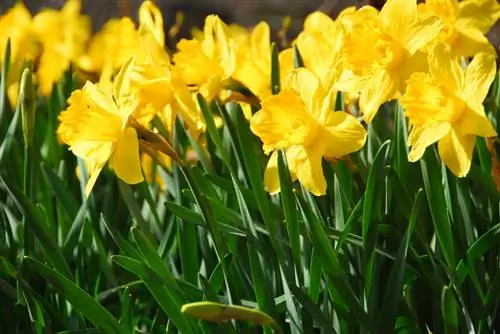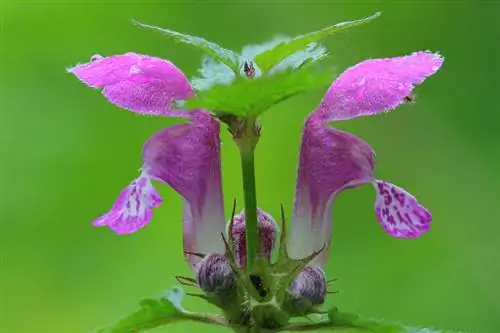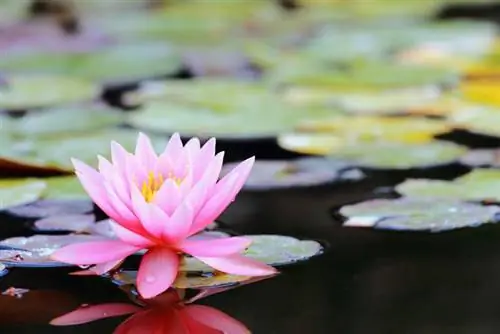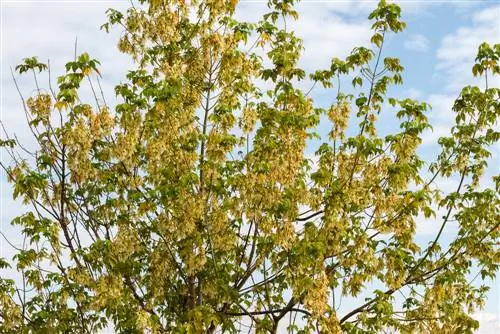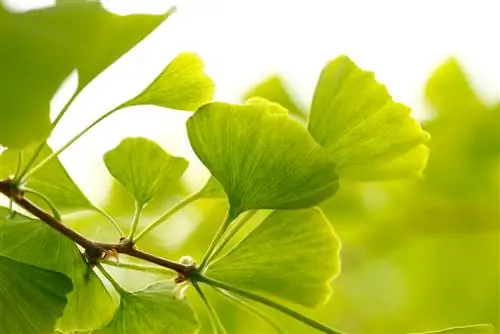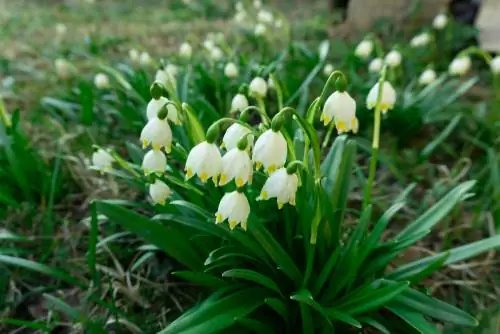- Author admin [email protected].
- Public 2023-12-16 16:46.
- Last modified 2025-01-23 11:22.
The daffodil is considered the symbol of spring. Especially at Easter time, it decorates numerous vases and stands next to colorful Easter eggs. But what is essential to know about the daffodil?
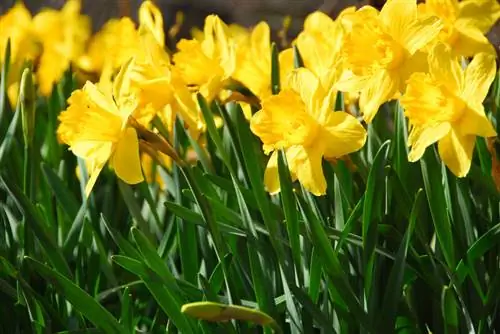
What are the basic characteristics of a daffodil?
The daffodil is a perennial bulbous plant from the amaryllis family that blooms between March and May. It reaches a height of 10 to 90 cm and grows in moist, nutrient-rich soil in sunny to partially shaded locations. Daffodils are poisonous to humans and animals.
The most important facts in the profile
- Plant family: Amaryllis family
- Plant type: Onion family, early bloomer
- Origin: Europe
- Lifespan: perennial
- Growth height: 10 to 90 cm
- Foliage: linear, deciduous, light, dark or blue-green
- Flowers: single, terminal, cup-shaped
- Flowering time: March to May
- Propagation: seeds, daughter bulbs
- Location: sunny to partially shaded
- Soil: moist, nutrient-rich
- Special features: toxic to humans and animals
Two important species among thousands
The daffodil, which is called Narcissus in botany, has many other names. Depending on the region, they are known under the terms daffodil, daffodil or false narcissus. There are several thousand species and varieties. The most common is the yellow daffodil. The white poet's daffodil is also quite popular and well-known.
This is what it looks like, the daffodil
It is an onion plant that survives in the ground and is not affected much by frosty temperatures in winter. Depending on the species, the daffodil reaches a height of between 10 and 90 cm. The herbaceous plant has a stem that shoots upright. Leaves 10 to 25 cm long develop at the base. They have a lanceolate shape, have smooth edges and turn yellow after flowering.
Most people recognize daffodils by their characteristic flowers. They are located terminally on the stems, are cup-shaped and consist of 6 petals. They can be white, yellow or orange or bi-colored. The flowering period is between March and May. After flowering, black seeds form.
Undemanding but poisonous
Daffodils place little demands on the location and substrate. The main thing is that it is sunny to partially shaded and the soil has a lot of nutrients. But the undemanding nature is no reason to treat the daffodil carelessly. She is poisonous. Animals in particular run the risk of being poisoned by it.
Tips & Tricks
How about daffodils and bulbs in a glass? This looks striking and after flowering, the bulbs of the plants can be stored in a pot with soil until next spring.

